Luzon Holiday Manuscript pages 4-6.
It was a bloody holocaust for the short time it lasted.
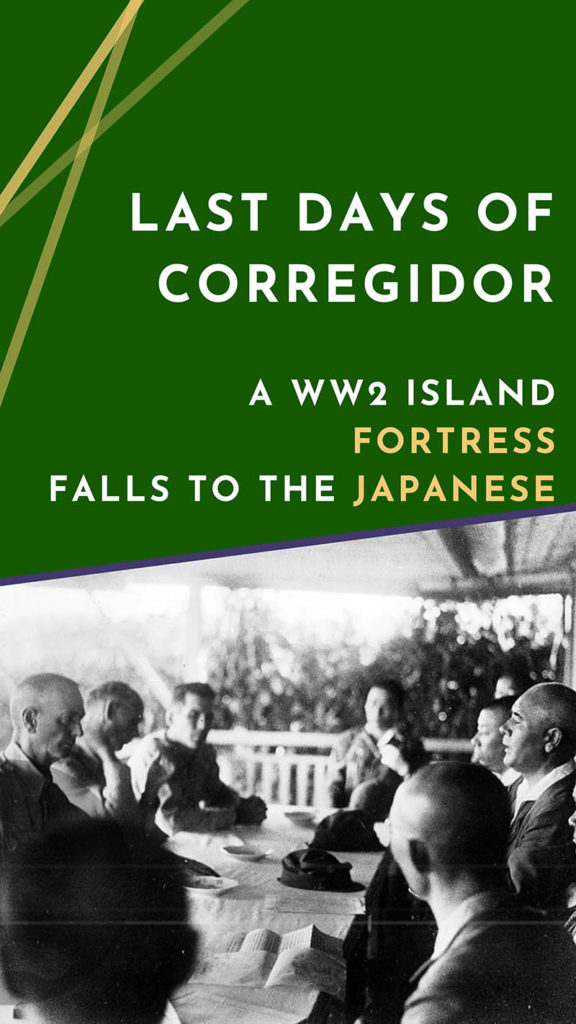
The small wooded slopes were strewn with American and enemy dead, and of those in the agony of dying.
Three days before the fall of Corregidor, the Japanese increased the tempo of their artillery barrage. An intense and murderous fire of all calibers of artillery ranging up to two hundred forty millimeters was directed against the northern side of the wooded and rocky island. Japanese batteries located and concealed in the ravines and hills of southern Bataan hurled approximately thirty thousand shells crossed the straits during the previous 48 hrs in to us. Much of our concealed artillery as well as machine guns were destroyed. Enemy aircraft overhead continued their rain of heavy bombs.
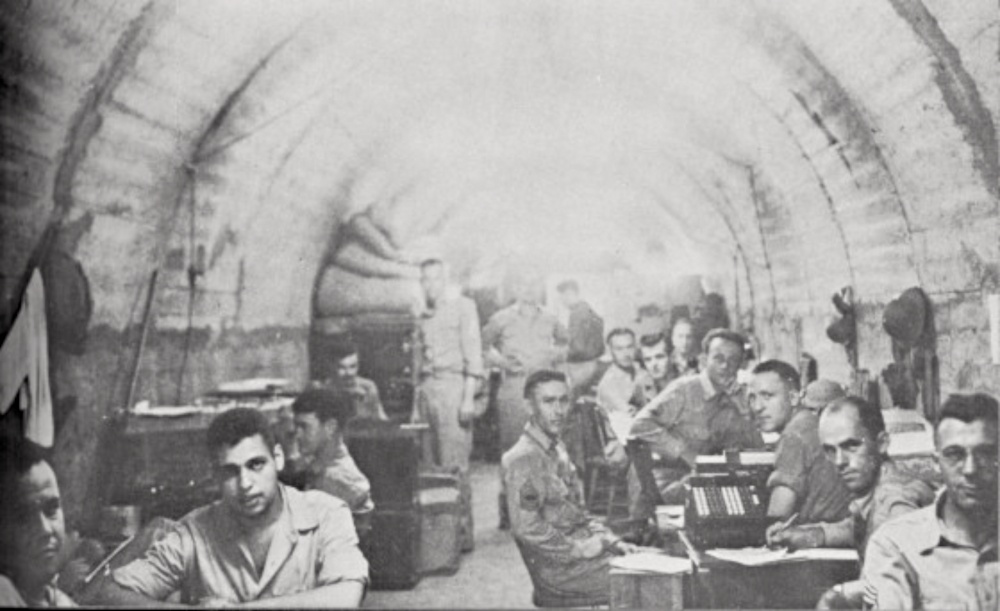
During the night of May 5th, 1942, and the early hours of May 6, 1942, our cryptograph and teletype machines used in preparing and transmitting military codes were destroyed piece by piece. All cryptographic publications and codes of various types were burned page by page throughout the night in metal waste paper baskets. For many hours the thick, acrid smoke lay like pall throughout the tunnels and laterals of Corrigdor in which all military staffs were housed, until it was difficult to breathe without choking.
The Japanese invade
Hordes of Japanese soldiers and tanks in an amphibious operation swarmed ashore and established a beachhead on Monkey Point—the north-eastern part of Corregidor Island, in the pre-dawn hours.
Columns of our men who maintained beach defense positions in Government Ravine and contiguous areas poured through the tunnels (from the western entrance) which pierced Malinta Peak and augmented our forces intrenched near Monkey Point, engaging the enemy in a last, bitter struggle. Fierce fighting continued until forenoon of that day.
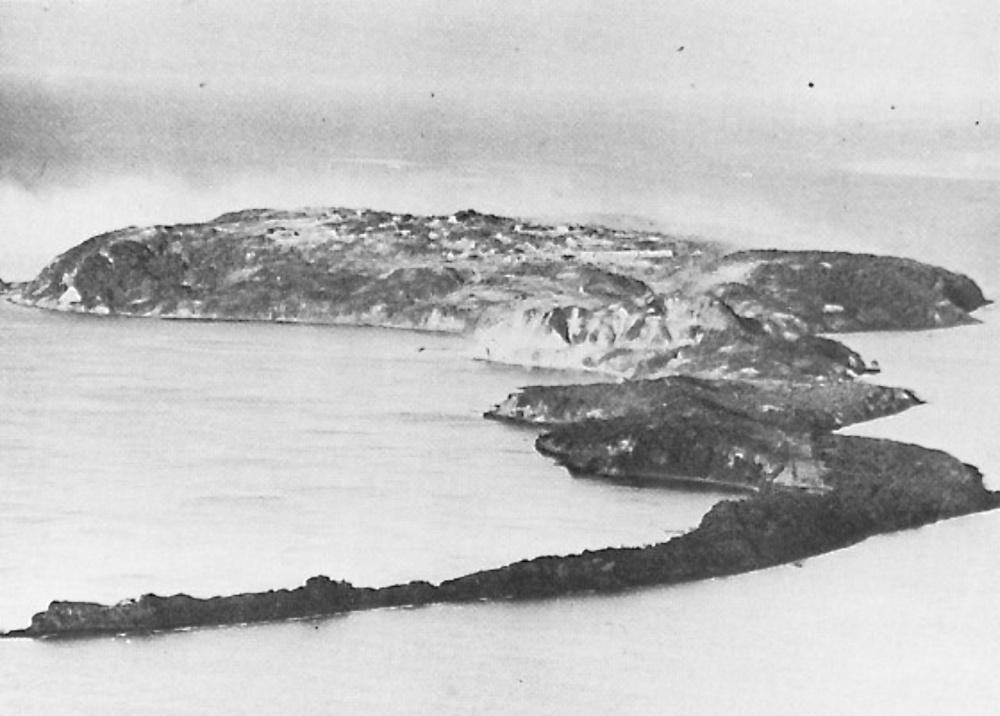
Our casualties, torn and bleeding and harrassed by infectuous flies, were carreied into the hospital in the laterals of Malinta tunnel—there to lie amid the stench and heat enduring the agony of their wounds.
The Japanese had overwhelming forces and a preponderance of heavier equipemnt, completely controlled the air and ground stradegy. It was only too obvious that further fighting would be a useless sacrfice of life which at most could only prolong our resistance for a short time—hours at best.
The Americans surrender
Over the Corregidor short wave radio, “The Voice of Freedom,” Lieutenant General Jonathan Wainwright, sent out the surrender message which was translated into Japanese by a Nisei. [This Nisei was a Japanese-American named Richard Sakakida, serving as a US spy.]
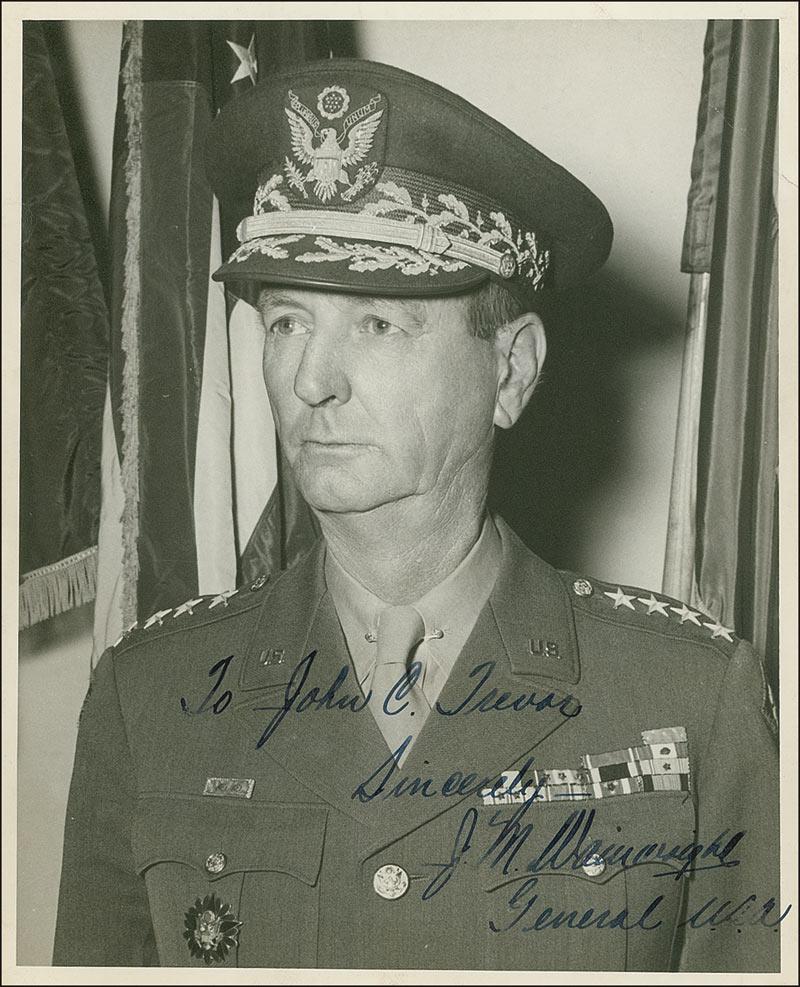
Precisely on the hour—as the blazing sun overhead registered high noon—the white flag of surrender was hoisted high atop rocky Malinta Peak. An unusual quiet settled over the “Rock” in sharp contrast to the din caused by many days of concentrated bombardment and bombing. Occasional Jap aerial bombings and sporadic firing in the western part of the island—where our troops had not gotten word of surrender—were the only sounds.
A feeling of frustration and dejection took hold of me as I watched our Star Spangled Banner give way. My eyes blurred before me. Never had we bowed to a non-English speaking race, and it was galling to see this symbol of military defeat flying from the gaff.
Surrender negotiations
Lieutenant General Jonathan Wainwright and his staff met Lieutenant General [Masaharu] Homma, of the Imperial Japanese Army, to sign the surrender terms. This rendezvous was held in a nipa structure over on Bataan. Lieutenant General Homa had brought along beer and other refreshment to cap the surrender scene.
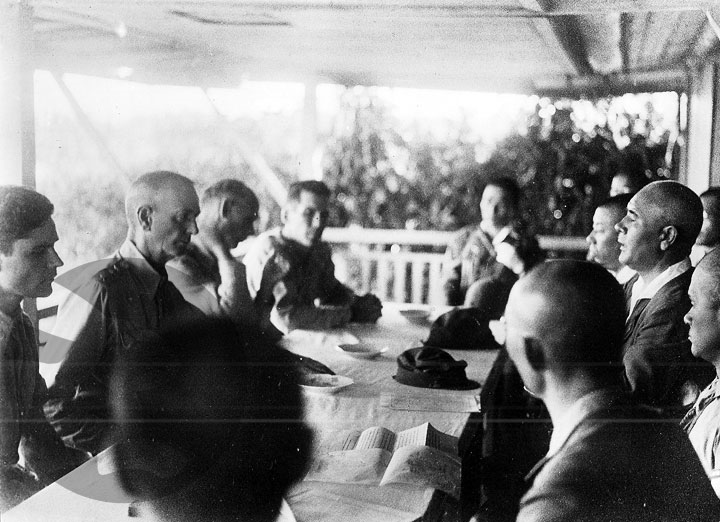
A difficulty immediately arose, however. Lieutenant General Homa announced his acceptance of Lieutenant General Wainwright’s surrender of the entire United States Forces in the Philippine Islands. At this juncture our general declared he had no authority to surrender the Southern Philippine Forces. The Japanese Military Commander became very angry and replied to the effect he was dealing with the wrong man; that he desired to transact these affairs with an officer of equal authority, and that Lieutenant General Wainwright in surrendering should negotiate with the local Jap military commander on Corregidor.
After Lieutenant General Homa’s shabby treatment of Lieutenant General Wainwright, he turned and haughtily strode to his waiting car, and left. All of the refreshments were loaded on the truck and carted away. Lieutenant General Wainwright shortly became possessed of authority over all the American Military Forces in the Philippine Islands. By radio he broadcast, in the presence of his baleful enemy, a Japanese officer of high rank, to all American Forces in the Philippines of the surrender and directed them to lay down their arms.

There was no other alternative Lieutenant General Wainwright could puruse. He would not permit any more men to die unnecessarily.
Read next:
- Heroic American spy — or war-time traitor? Decide where you stand on the controversy surrounding Sgt. Richard M. Sakakida.
- Discover rare historical photos of the Japanese invasion of Corregidor, as well as maps and other Corregidor photos from before and after the attacks.
- As the battle ended on May 6, 1942, the Americans and Filipinos on Corregidor were no longer free men. Read Alma Salm’s record of their first days as POWs on Corregidor.
Know anyone who would appreciate this post?
You’re a vital part of keeping this story alive in our memories. If you know anyone who would like this memoir, please consider sending them the link to this page or sharing on social media.
Image sources
- Image 1: US troops in Malinta tunnel. US Army photograph, public domain, Photo ID: 3587779, VIRIN: 410000-G-GO214-1005, found online at https://www.dvidshub.net/image/3587779/troops-malinta-tunnel, accessed 19 May 2019.
- Image 2: Arial view of Corregidor island. US Army photograph, Photo ID: 3587774, VIRIN: 410000-G-GO214-1004, found online at https://www.dvidshub.net/image/3587774/corregidor-island, accessed 19 may 2019.
- Image 3: Jonathan Wainwright, by Unknow Military photographer, U.S. War Department, Public Domain, found online at https://commons.wikimedia.org/w/index.php?curid=21665924, accessed 19 May 2019.
- Image 4: Surrender on Bataan, US Army photograph, public domain, in collection of National Archives, found online at http://www.usmilitariaforum.com/forums/index.php?/topic/143051-the-fall-of-the-us-forces-in-the-philippines-70-years-ago/, accessed 19 May 2019.
- Image 5: Japanese stage removing American flag on Corregidor, found online at “World War II, 1942-43,” History Hub, https://sites.austincc.edu/caddis/world-war-ii-1942-43/, accessed 20 May 2019.
![“Last Days of Corregidor”: A WW2 island fortress falls to the Japanese [Memoir #2]](https://www.anastasiaharman.com/wp-content/uploads/2019/05/American-Surrender-on-Bataan-367x522.png)
